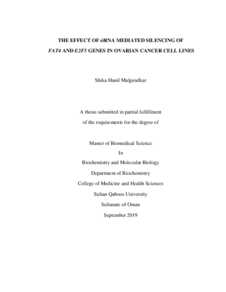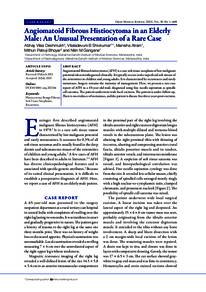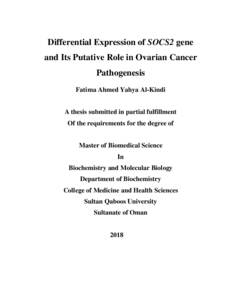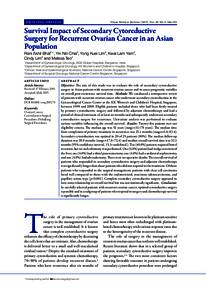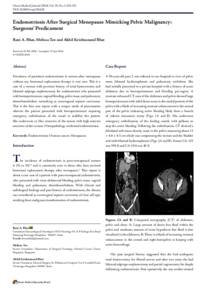وثيقة
The impact of long non-coding RNAs on gene expression regulation and pathogenesis mechanisms in ovarian cancer through emerging molecular and bioinformatic analysis.
المصدر
Doctoral dissertation
عناوين أخرى
تأثير الأحماض النووية الرايبوزية الطويلة غير الُمشفرة على تنظيم تعبير الجينات وآليات مسببات المرض في سرطان المبيض من خلال التحليل الجزيئي الحيوي والمعلوماتي
الدولة
Oman
مكان النشر
Muscat
الناشر
Sultan Qaboos University
ميلادي
2024
اللغة
الأنجليزية
نوع الرسالة الجامعية
Doctoral dissertation
الملخص الإنجليزي
Background: Epithelial Ovarian cancer (EOC) is a lethal gynecological malignancy,
commonly regarded as a silent killer. The majority (80%) of the EOC patients are
diagnosed at the late stages due to the absence of reliable biomarkers, which along with
the resistance to drug treatment and recurrence are the major causes for the poor overall
survival. Hence, it is imperative to identify biomarkers for early EOC detection and for
better survival outcomes. In our previous study, we conducted chromatin
immunoprecipitation (ChIP) using E2F5, a transcription factor known for its high
expression in early-stage EOC, to identify candidate genes potentially involved in EOC
pathogenesis. Through ChIP analysis, we discovered several E2F5 downstream target
genes (FBXW7, FAT4, ARID1A), including non-coding RNAs (ncRNAs). Long noncoding RNAs (lncRNAs), may play a role in cancer development and could potentially
serve as biomarkers for early cancer diagnosis. However, the precise role of lncRNAs in
EOC remains largely unexplored, impeding our understanding of their involvement in
gene regulation mechanisms.
Materials and Methods: To investigate the downregulation mechanism of E2F5 target
genes (FBXW7, FAT4, ARID1A), we employed gene panel exome sequencing, and
conducted bioinformatic analysis. Also, methylation-specific PCR (MSP) was performed
to analyze the methylation status of FBXW7. Additionally, to assess the functional role
of the E2F5 downstream target lncRNA LINC01465, we performed cell proliferation,
invasion, and wound healing assays. Furthermore, to identify differentially expressed
lncRNAs in primary EOC samples compared to recurrent EOC samples, we conducted
bioinformatics analysis using data from The Cancer Genome Atlas (TCGA) database,
employing the GDCRNA Tools in R program. Among the differentially expressed
lncRNAs, we selected the lncRNA AC243964.2 as a potential candidate for further
validation in EOC cell lines. Similarly, analysis using the GEPIA database revealed
significantly dysregulated lncRNA (RFX5-AS1), which we further validated in EOC cell
lines. Moreover, we quantified the expression of LINC01465, AC243964.2, and RFX5-
AS1 in Malformin A1 (MA1)-treated EOC cells to investigate its potential role in
modulating drug resistance. Lastly, we monitored the differential expression of
AC243964.2 and RFX5-AS1 in HOSE 6-3 cells treated with extracellular vesicle enriched
media from OVSAHO cells, and vice-versa. To investigate potential of extracellular
vesicles, including exosomes, to reverse the cellular phenotype, we measured the
alterations in the expression levels of mesenchymal marker SNAI1 and epithelial marker
E CAD in HOSE 6-3 cells treated with extracellular vesicles derived from OVSAHO
VIII
cells, and vice-versa.
Results: Consistent with in-silico analysis, EOC samples did not exhibit FBXW7
methylation. Furthermore, there was an absence of mutation/deletion in the FBXW7,
FAT4, and ARID1A genes, indicating an alternative regulatory mechanism involving
ncRNAs responsible for their suppression. Consequently, we chose to investigate the
functional role of the lncRNA LINC01465, a downstream target of E2F5, in EOC cell
lines. Silencing of LINC01465 resulted in reduced migratory ability in SKOV3 and
OVSAHO cells, suggesting an oncogenic function. Furthermore, upregulation of
LINC01465 was observed in MA1-treated A2780 S and A2780 CP cells, which correlated
with increased levels of CASPASE-1, promoting cell death through pyroptosis in A2780
S and A2780 CP cells. Regarding the functional analysis of AC243964.2, inhibiting its
expression in OVSAHO cells resulted in a decreased number of colonies compared to the
control group (NC). Moreover, while there was a decrease in the expression of ATG5,
FOXM1, and the anti-apoptotic marker BCL2, the expression of CASPASE-9 and TP53
increased at the RNA levels. Additionally, BCL2, BCL-XL, and the apoptotic marker
CASPASE-3 were downregulated at the protein level, while FOXM1 was overexpressed,
suggesting a potential role of AC243964.2 in oncogenesis. In terms of RFX5-AS1,
downregulation of SOD2 expression was observed in RFX5-AS1-silenced A2780 CP
cells, while RFX5-AS1-silenced OVSAHO cells exhibited lower levels of YAP1 and
SOD2. Furthermore, RFX5-AS1 was upregulated, while AC243964.2 levels were lower
in MA1-treated A2780 CP and OVSAHO cells compared to untreated cells. Additionally,
the expression of AC243964.2, RFX5-AS1, and AC061992.1 lncRNAs was higher in
HOSE 6-3 cells treated with extracellular vesicle-enriched media from OVSAHO.
Conversely, downregulation in the expression of AC243964.2 and AC061992.1 was
observed in OVSAHO cells treated with extracellular vesicle-enriched media from HOSE
6-3 cells. In terms of the epithelial-mesenchymal transition (EMT) markers, we observed
a decrease in the epithelial marker E CAD in HOSE 6-3 cells treated with extracellular
vesicles enriched media from OVSAHO cells, while the mesenchymal marker SNAI1,
was upregulated.
Conclusion: Our study uncovers the novel roles of the lncRNAs LINC01465,
AC243964.2, and RFX5-AS1 in regulating EOC. Based on our findings, we propose that
the lncRNA LINC01465 may play a crucial role in MA1-induced cell death through
CASPASE-1-mediated pyroptosis. Additionally, the lncRNA AC243964.2 could
influence EOC progression by modulating apoptotic and autophagy pathways. Regarding
RFX5-AS1, its regulatory mechanism in ovarian carcinogenesis may involve the YAP1
and SOD2 pathways. Dysregulation of these pathways can lead to uncontrolled cell
growth and tumorigenesis, underscoring their significance as targets for cancer research
and therapy. Moreover, the field of exosomes is rapidly evolving and holds great promise
for biomarker detection, disease diagnosis, and treatment. Future efforts should focus on
further elucidating the underlying molecular mechanisms regulated by these lncRNAs,
validating their roles as biomarkers, and developing effective strategies to combat this
devastating disease.
قالب العنصر
الرسائل والأطروحات الجامعية


